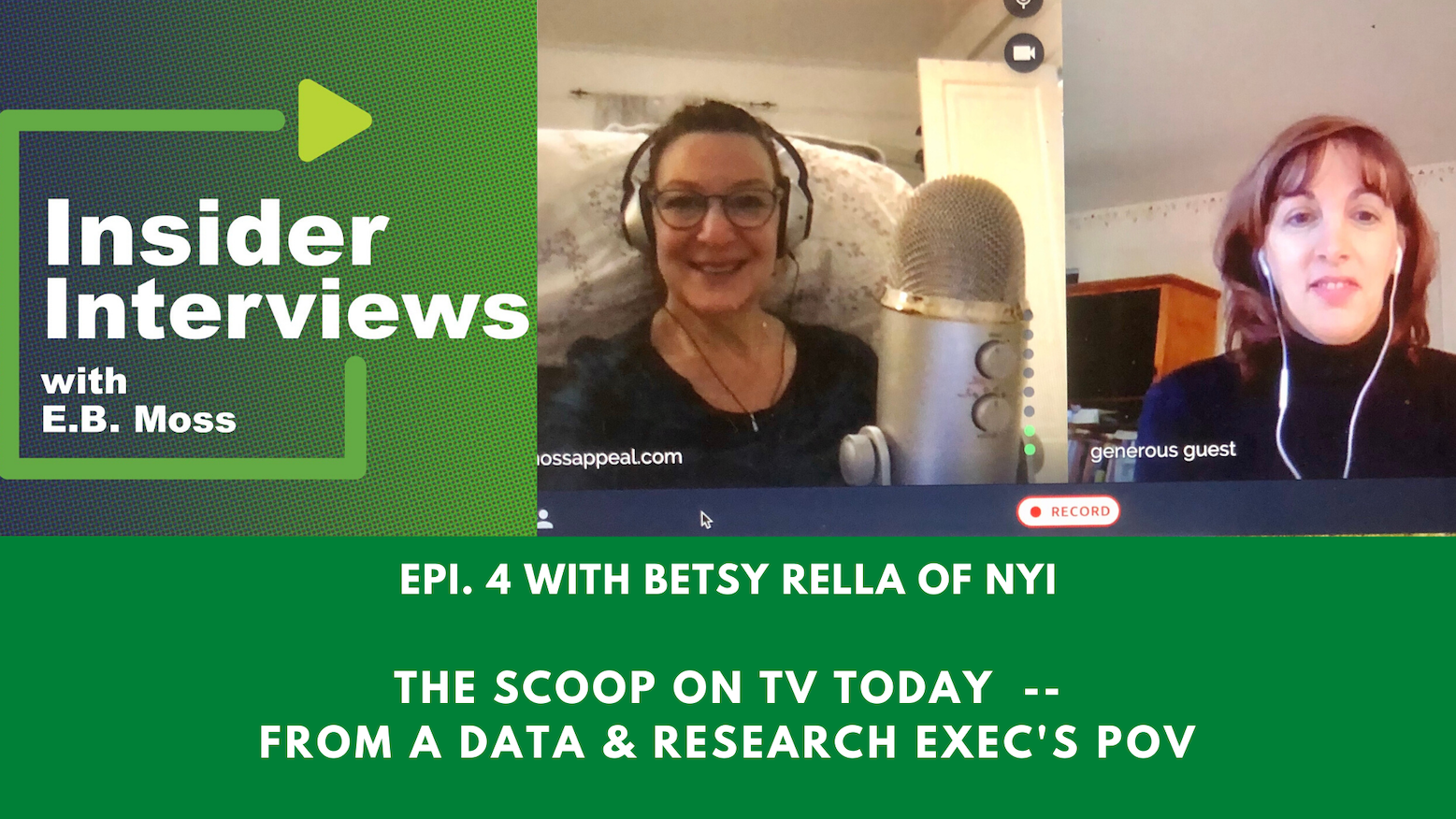Podcast: Play in new window | Download (Duration: 34:11 — 23.5MB) | Embed
Subscribe or Follow Spotify | Android | Pandora | iHeartRadio | TuneIn | Deezer | RSS | More
As VP of data and research for NYI – the ad sales interconnect in the country’s biggest DMA, Betsy Rella likes finding the stories in the numbers – the takeaways she extrapolates from surveys and data sets that NYI can use to grow the advertising business. And, at a time when the world, literally, is home and when those numbers say that New Yorkers are consuming more video than ever, that information is key. Since everyone in media/marketing is also playing catch up on their knowledge base and business insights, I asked Rella for a download on trends in consumption and a 101 on how media buys are planned and sold differently these days.
Always wanted a solid definition of “Impression-Based Buying”? You got it.
How that differs from “Holistic Media Planning”? Done. We also talked about the very definition of TV today, how media companies need to assess all the ways and places people are consuming video (and whatever they call TV), the rise of CTV (“connected TV”) and why Cuomo Prime Time is consistently topping the ratings along with all kinds of news programs.
It’s actually a little beyond a “101”, so get the “201” on today’s shifts in media buying and planning from a data and research exec who has worked at ABC, Lifetime, MTV, Weather Channel, Ispos and TiVo! Listen to the full podcast, and please subscribe wherever you love to listen (And speaking of RATINGS – a bunch of stars for Insider Interviews with E.B. Moss on Apple would be appreciated!)
 Key takeaways:
Key takeaways:
On TV: “You could be watching on your TV set, you could be watching on your phone, you could be watching on your computer, you could be watching on your iPad. And Nielsen classifies different types of households: a home that is a cable home or an over the air home or a broadband only home. But people are still buying TV sets. So, in some ways it’s still TV, but there’s more content is available, whether it’s through ad-supported cable networks or paid channels.
On Impression-based Buying: “With the dawn of new technologies, phones, tablets and so on, and the ability for consumers to engage with content on all these platforms, the game has changed as has the need for advertisers to flight campaigns across these multiple platforms. Because, of course, if you can’t measure it, you can’t sell it! If you look at Nielsen data, overall time spent with video is relatively flat over the last two years. But what’s changed is how people are viewing: we see a decline in live plus time shifted TV, but an increase in viewing on connected devices, smart phones and tablets. So, this begs the question, how do you measure all the viewing across these many platforms so you can report back to the client in a more unified way? Using impressions unifies linear and digital, and also eliminates any ratings discrepancies from using different universes.”
On TV Consumption as we #StayHome: “Usage levels have surged across multiple day parts and it’s not just adults — we’re seeing growth in teens and 18 to 34s as well. Ratings are up, of course, for news networks across the board, not only in early morning, but all dayparts, even overnight. as we’re seeing people staying up later than they were before. We’re seeing live TV up. DVR playback up. And streaming in New York is up 44%. That’s a pretty big number and was measured just a few weeks ago.”
On the Need for and Challenge of Holistic Media Planning: “Right now you get TV in one place, digital in another place. Ideally you would have one platform where everything’s feeding into it in terms of your TV piece, your digital piece, your OTT piece, your set top box, video on demand piece. Part of it involves legacy thinking and workflows that have existed for decades, and quite honestly, the systems themselves. It all needs to feed into one platform so you’re not operating on a siloed basis.”
On Advertising and Brand Marketing Now: “Consumers say they want brands to share information on how they’re supporting their staff and customers during this time. Others are saying they want the ads to provide a sense of continuity and normalcy. Some people are looking for upbeat ads. So, while advertising has been impacted for sure, it’s not going away. And based on studies over the past many years that say, even in downtimes, you still want to stay top of mind.”


